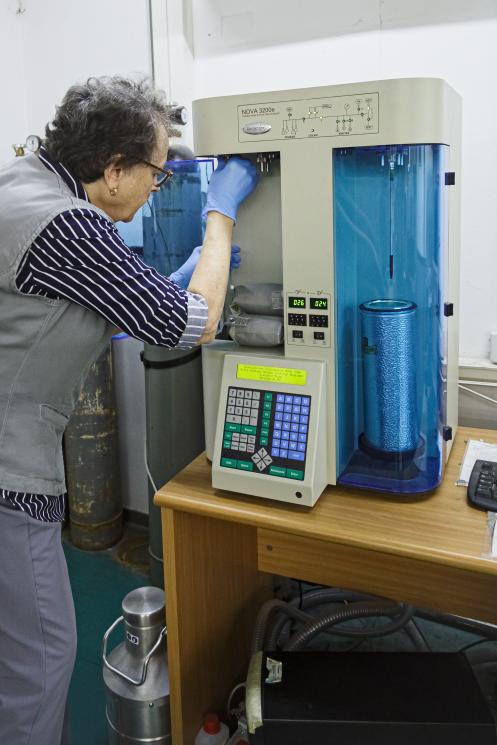B.E.T.
Contact: Dr. Ronit Lavi 03-7384598 ronit.lavi@biu.ac.il

Determination of the surface area of the substrate is to be done by physical adsorption of the gas (usually nitrogen). Gas molecules that stick to the surface of the substrate solid (adsorbent) are said to be adsorbed and tend to form a thin layer that covers the entire adsorbent surface. Based on the well-known Brunauer, Emmett and Teller (B.E.T.) theory, one can estimate the number of molecules required to cover the adsorbent surface with a monolayer of adsorbed molecules (Nm). Multiplying Nm by the cross-sectional area of an adsorbate molecule yields the sample’s surface area.
Continued addition of gas molecules (at the constant temperature of gas condensation) beyond monolayer formation leads to the gradual stacking of multiple layers (or multilayers). The latter process quantifies the proportionality between residual (or equilibrium) gas pressure and the size of capillaries capable of condensing gas within them. Methods such as the one by Barrett, Joyner and Halenda (B.J.H.) allow the computation of pore sizes from equilibrium gas pressures. One can therefore generate experimental curves (or isotherms) linking adsorbed gas volumes with relative saturation pressures at equilibrium, and convert them to cumulative or differential pore size distributions. Our lab uses NOVA 3200E Quantachrome for BET measuremensts.
The BET instrument is found at room 213 building 211.



